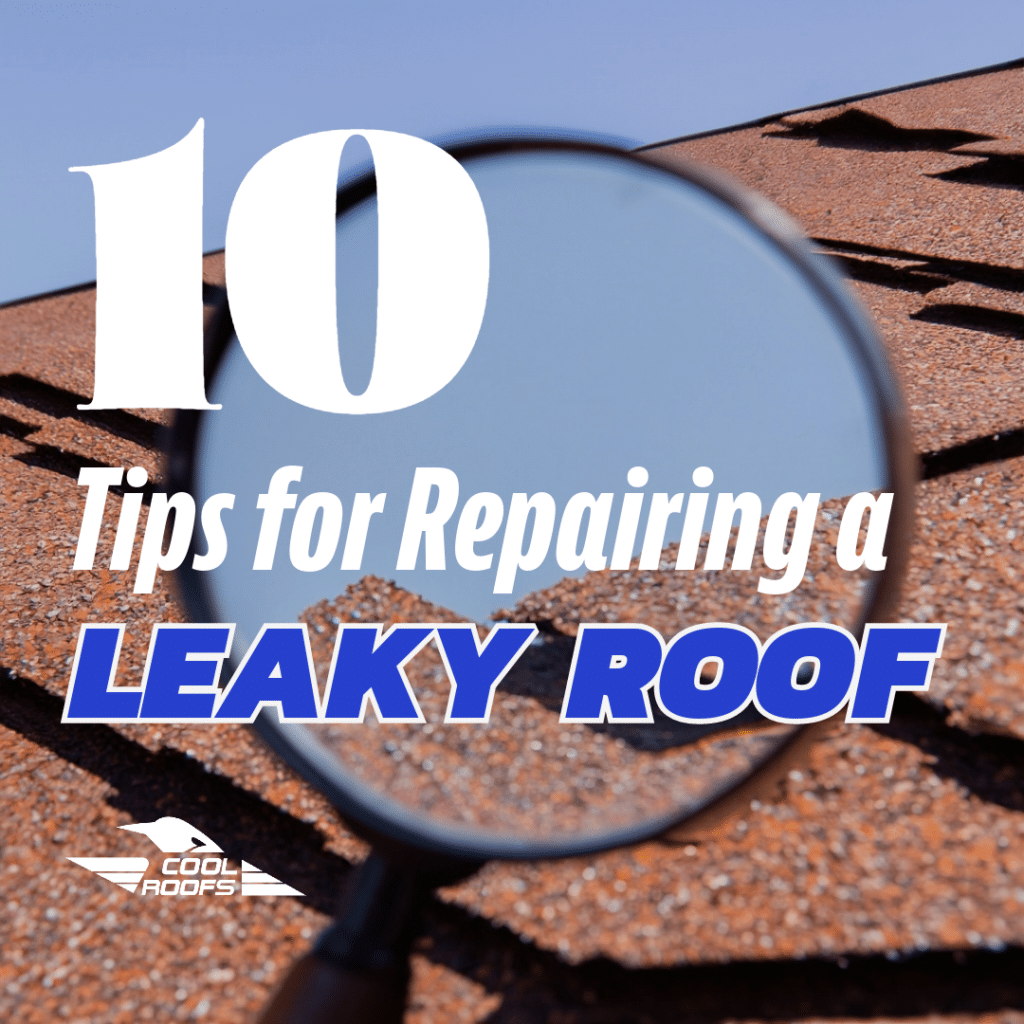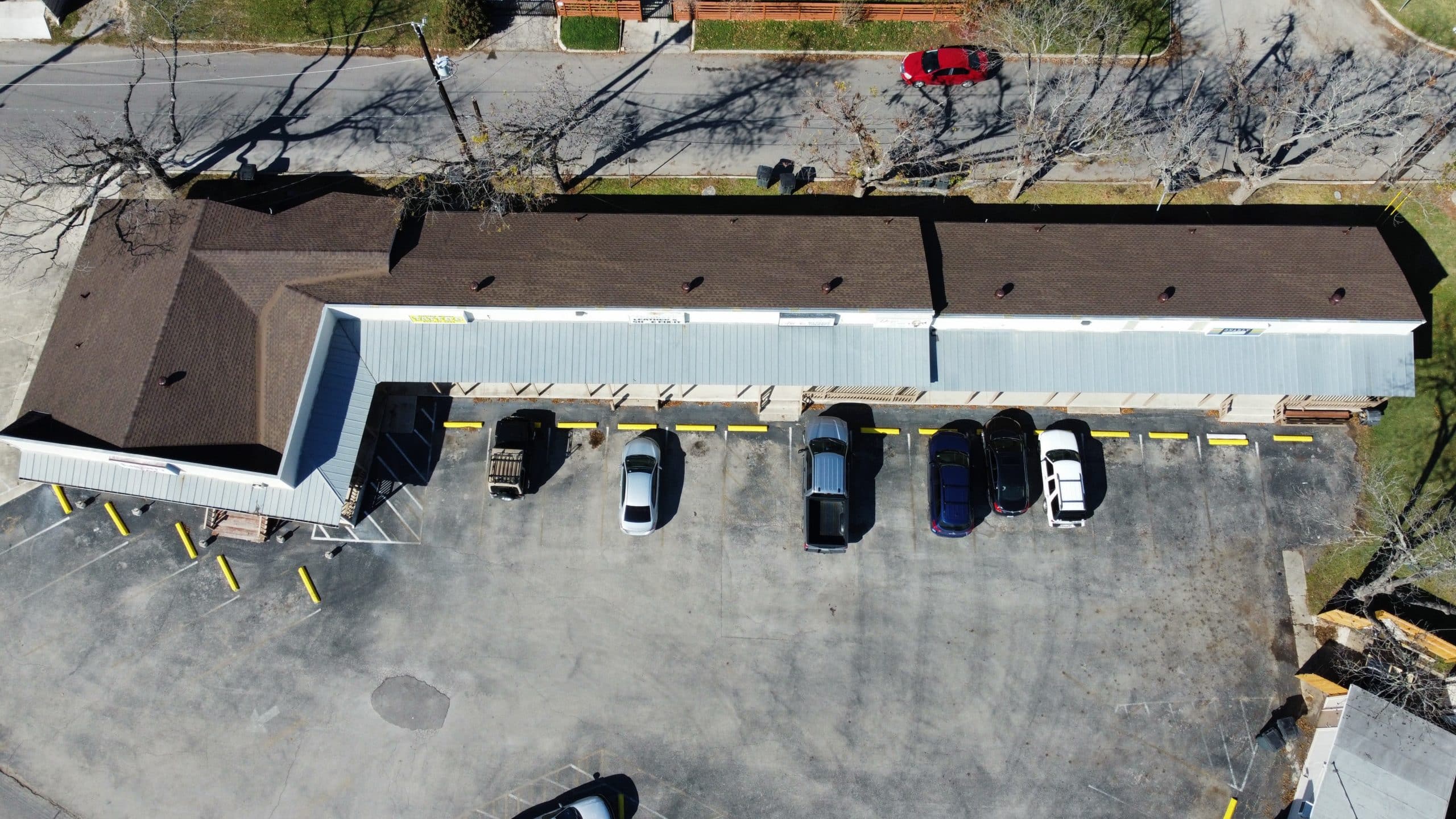Repairing Roof Leaks: Tips to Fix & Prevent Damage
Introduction to Find and Fix a Leaky Roof
A leaky roof can cause significant damage to your home if not addressed promptly and effectively. Water dripping into your living space can lead to mold, mildew, and structural issues. It is essential to repair a leak as soon as possible to prevent further damage and costly repairs. In this article, we will provide you with ten tips on how to fix a roof leak and prevent additional harm.

Why is it important to repair a leaky roof?
Fixing your leaky roof is crucial for several reasons. Firstly, a leaking roof can cause damage to your home’s interior, including walls, ceilings, and flooring. This water intrusion can lead to mold and mildew growth, compromising your indoor air quality and potentially causing health issues. Additionally, a leaking roof can cause structural damage over time, weakening the overall integrity of your home. So promptly stop the leak, you can prevent these issues and maintain a safe and healthy living environment.
Cost to repair a leaking roof
The cost to repair a leaking roof can vary depending on the extent of the damage and the size of your roof. Minor roof repairs, such as replacing a few missing shingles or sealing a small leak, can cost as little as a few hundred dollars. However, more extensive repairs, such as replacing a large section of damaged roof decking or fixing structural issues caused by water damage, can cost several thousand dollars. It is essential to address leaks promptly to minimize the risk of costly repairs in the future.
Finding and Assessing the Roof Leak
How to find a roof leak
Finding a leak can sometimes be challenging, as water can travel along the underside of the roof before entering your home. Start by inspecting your attic, looking for any signs of water stains or dampness on the ceiling or walls. Follow the trail of the water stains to locate the general area where the leak is occurring. If you have access to your roof, carefully inspect it for any damaged or missing shingles, cracked flashing, or deteriorated roof vents.
Identifying the source of the leaking roof
Once you’ve located the general area of the leak, it’s essential to identify the specific source. Water can travel horizontally along roofing materials, making it appear as though the leak is coming from a different location. Carefully examine the surrounding roofing materials, paying attention to any visible damage or signs of wear and tear. Common sources of leaks include damaged or missing shingles, damaged flashing around vents and chimneys, and improperly sealed skylights.
Common Types of Roof Leaks
Roof leaks caused by damaged or shingles missing
One of the most common causes of leaks is damaged or missing shingles on your roof. Strong winds, storms, and aging can cause shingles to crack, curl, or become dislodged. These damaged shingles create openings for water to seep into your home. Regularly inspecting your roof for any signs of damage and promptly replacing any missing or damaged shingles can help prevent these types of leaks.
Leaking roof vents and flashings
Roof vents and flashings are designed to protect vulnerable areas of your roof from water intrusion. Over time, these elements can become damaged or deteriorated, leading to leaks. Check the condition of your roof vents and flashings, ensuring that they are properly sealed and free from cracks or gaps. If necessary, replace damaged roof vents and flashings with new ones to prevent water from entering your home.
Leaks around chimneys and skylights
Chimneys and skylights are particularly susceptible to leaks due to their complex construction and the potential for water to collect around them. Inspect the flashing and sealant around these areas, looking for any signs of deterioration or damage. If you notice any issues, such as cracked flashing or deteriorated sealant, repair them immediately.

10 Temporary Fixes for Roof Leaks
1. Applying temporary patches on the roof
Temporary patches can be applied to the roof to stop leaks temporarily. These patches can be made from materials such as roofing cement, tarps, or roofing patches that are designed to seal the damaged area. Apply the patch directly over the leak, ensuring that it is securely attached and covers the entire affected area. While these patches are effective in stopping leaks in the short term, it is important to follow up with a permanent repair to prevent further damage.
2. Using sealants and caulks to stop leaks temporarily
Sealants and caulks can also be used to temporarily stop roof leaks. These products are applied directly to the damaged area, creating a watertight seal. Clean the area around the leak, removing any debris or loose roofing material. Apply the sealant or caulk, smoothing it out with a putty knife or similar tool. Allow the sealant to dry completely before exposing it to water. Keep in mind that sealants and caulks are not permanent solutions and should be used as a temporary fix until a proper repair can be made.
Permanent Repairs for Roof Leaks
3. Replacing damaged shingles and roof components
To permanently fix a roof leak caused by damaged shingles or roof components, the affected areas must be replaced. Carefully remove the damaged shingles or roof material, ensuring that the surrounding area is not further damaged. Install new shingles or roof components, following the manufacturer’s instructions and recommended installation techniques. This will provide a long-lasting solution to the roof leak and prevent future water intrusion.
4. Repairing roof vents and flashings
Repairing roof vents and flashings involves replacing damaged or deteriorated components. Remove the old flashing or vent boot, ensuring that the area is clean and free from debris. Install a new flashing or vent boot, using roofing cement to create a watertight seal. Properly secure the new component to the roof, following the manufacturer’s instructions. This will prevent water from entering your home through these vulnerable areas.
5. Fixing leaks around chimneys and skylights
Leaks around chimneys and skylights can be challenging to fix permanently. Start by inspecting the flashing and sealant around these areas, repairing any damage or deterioration. If the leak persists, it may be necessary to remove the surrounding roofing materials and reinstall them, ensuring proper alignment and sealing. Consider consulting a professional roofing contractor for these types of repairs to ensure a proper and long-lasting fix.
Preventing Further Damage
6. Regular roof maintenance to prevent leaks
Regular roof maintenance is essential for preventing leaks and prolonging the lifespan of your roof. Inspect your roof at least twice a year, looking for any signs of damage, such as cracked or shingles missing. Trim overhanging tree branches to prevent them from scraping against the roof during storms. Keep your roof clean from debris, as a buildup of leaves and dirt can trap moisture and cause damage.
7. Checking and cleaning gutters and downspouts
Clogged gutters and downspouts can lead to water backup, causing roof leaks and water damage. Regularly check your gutters and downspouts for debris, removing any leaves, twigs, or other obstructions. Use a garden hose to flush out any remaining debris and ensure that water flows freely through the system. By keeping your gutters and downspouts clean, you can prevent water from overflowing and damaging your roof.
8. Ensuring proper attic ventilation
Proper attic ventilation is essential for preventing roof leaks and prolonging the life of your roof. Good ventilation helps regulate temperature and moisture levels in the attic, reducing the risk of condensation and mold growth. Ensure that your attic has sufficient vents and that they are not blocked or obstructed by insulation. Consider installing additional vents or a powered attic fan if your attic lacks proper ventilation.
When to Call a Professional
9. Signs that indicate the need for professional roof repair
While some roof repairs can be done by homeowners, there are situations where it is best to call a professional roofing contractor. Signs that indicate the need for professional roof repair include extensive or widespread roof damage, leaks that persist despite temporary fixes, and roof issues that require specialized knowledge or equipment to fix. It is also advisable to seek professional help if you are uncomfortable working at heights or lack the necessary experience and skills.
10. Choosing a reliable and experienced roofing contractor
When selecting aroofing contractor, it is essential to choose a reliable and experienced professional. Ask for recommendations from friends, family, or neighbors who have recently had their roofs repaired. Research different contractors, checking their licenses, insurance coverage, and customer reviews. Obtain multiple quotes and compare them, ensuring that all necessary repairs are included in the estimate. Before hiring a contractor, request a written contract that clearly outlines the scope of work, materials to be used, and payment terms.

10 Effective Tips to Fix a Leaking Roof
Taking prompt action when your roof is leaking is CRITICAL
Repairing a leaky roof is not only essential for preserving the integrity of your home but also for maintaining a safe and healthy living environment. By taking prompt action to repair a leak in your roof, you can prevent further damage and costly repairs in the future. Regular roof maintenance, identifying the source of the leak, and using temporary and permanent fixes when necessary are key to keeping your roof leak-free.
Maintaining a leak-free roof for long-term protection
Preventing roof leaks involves ongoing maintenance and regular inspections. By addressing minor issues promptly and conducting regular maintenance tasks, you can extend the lifespan of your roof and avoid costly repairs. Remember to clean and inspect your gutters regularly, ensure proper attic ventilation, and fix any damaged shingles or flashings. By taking these preventive measures, you can enjoy a leak-free roof and the peace of mind that comes with it.
Cool Roofs
Q: What are some common signs of a leaking roof?
A: Some common signs of a leaking roof include water stains on the ceiling or walls, damp spots on the attic floor, and the presence of mold or mildew.
Q: How can I find a roof leak?
A: To find a roof leak, start by inspecting the attic for any signs of water damage. Look for damp spots, water stains, or mold growth. You can also check the roof for any missing or damaged shingles, cracked flashing, or gaps around vents or chimneys.
Q: What should I do if I find signs of a roof leak?
A: If you see signs that you need to fix a leaking roof, it is important to fix it as soon as possible to prevent further damage. First, locate the source of the leak. If it is a small leak, you can try to fix it yourself using roof sealant or by replacing damaged shingles. If the leak is larger or you are unsure how to fix it, it is best to contact a professional roofer.
Q: Can I repair a leaking roof myself?
A: It is possible to repair a leaking roof yourself, especially if it is a small leak and you have some DIY experience. However, it is important to consider your own safety and the complexity of the repair. If the leak is significant or you are unsure how to fix it, it is best to hire a professional roofer.
Q: How much does it cost to repair a roof leak?
A: The cost to repair a roof leak can vary depending on the extent of the damage and the type of repair needed. On average, homeowners can expect to pay between $300 and $1,000 for roof leak repairs. However, this cost can be higher for more complex repairs or larger leaks.
Q: How can I prevent further damage to my roof?
A: To prevent further damage to your roof, it is important to fix any leaks as soon as you notice them. Regular roof maintenance, such as cleaning gutters, trimming overhanging trees, and inspecting the roof for any damage, can also help prevent leaks and extend the lifespan of your roof.
Q: What should I do if I have a flat roof that is leaking?
A: If you have a flat roof that is leaking, you may need to hire a professional roofer who specializes in flat roof repairs. Flat roofs can be more challenging to repair compared to sloped roofs, and it is best to leave the repair to a professional to ensure it is done correctly.
Q: Can a roof leak be fixed by applying roof sealant?
A: Yes, applying roof sealant can be an effective way to fix a small roof leak. Roof sealant, also known as caulk, is applied to the source of the leak to create a watertight seal. However, it is important to note that roof sealant is a temporary fix and may need to be reapplied periodically.
Q: How can I find the source of a roof leak?
A: Finding the source of a roof leak can be a bit tricky. One method is to use a garden hose to simulate rain and systematically wet different areas of the roof while someone checks for leaks inside the house. This can help pinpoint the exact location of the leak.
Q: What are some common sources of roof leaks?
A: Some common sources of roof leaks include damaged or a row of shingles missing, cracked flashing around vents or chimneys, clogged gutters, and problems with roof vents or skylights. It is important to regularly inspect these areas of your roof for any signs of damage.






